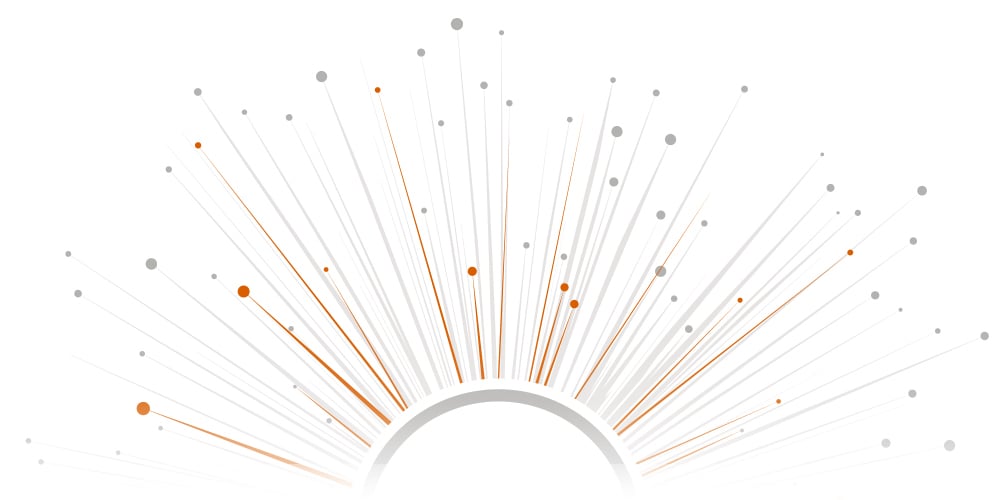
LEVERAGING ELEVEN TRADE SHOW BEST PRACTICES WITH EVENT SUITE
With their origins tracing back to Middle Eastern bazaars thousands of years ago, trade shows have evolved significantly since the 19th century and, to this day, continue to provide a foundation that can lead your company to success.
Read on to discover eleven best practices for exhibiting and how Event Suite's trade show-specific project management system can help you achieve your objectives.
Trade Show Best Practice #1: Set Clear Goals
Establishing measurable goals for participating in trade shows is critical. Whether your objectives include generating leads, increasing brand awareness, launching new products, or fostering industry relationships, having well-defined objectives will guide your strategic planning and enable practical performance evaluation. It is essential to recognize that different shows may warrant different goals, depending on your company's position in various markets.
How Event Suite Helps You Set Clear Goals:
Event Suite includes a Strategy Tab that allows you to assign and prioritize goals for each event systematically. Following the show, you can quickly generate aggregated reports and access them throughout the sales process.
Trade Show Best Practice #2: Plan Ahead

Effective planning is paramount for trade show success. Get ahead by developing a comprehensive timeline incorporating critical tasks such as booth design, promotional material creation, staff training, travel arrangements, and pre-show marketing initiatives.
Allocate additional time for planning if you are:
- Utilizing a larger booth space
- Attending a trade show for the first time
- Exhibiting at an international event
How Event Suite Helps You Plan Ahead:
Event Suite consolidates all upcoming trade show tasks into a centralized workflow, enabling you to delegate responsibilities and monitor their progress easily. Team members can update or complete tasks efficiently with just one click. Features such as time-stamped assignments, due dates, automated status reports, and scheduled reminders foster accountability and ensure timely project completion.
Trade Show Best Practice #3: Select the Right Shows and Spaces

The selection of trade shows and events should be strategic, aligning with your organization's business, marketing, and sales objectives. Choose events with audiences that reflect your ideal customers, partners, and influencers and have a proven history of delivering qualified leads and high returns on investment. Categories of events may include industry shows, vertical market shows, and various national, regional, local, vendor, and international shows. Implement a system for approving new shows and removing those that no longer align with your goals, and adjust your booth size according to your budget and marketing alignment.
How Event Suite Helps You Select the Right Shows and Spaces:
Event Suite allows you to collect and analyze data on show results in one centralized platform. It features auto-generated graphs that facilitate quick visualization of performance metrics and allows for in-depth analysis by various criteria, including event type, region, and date ranges. Furthermore, it evaluates how each show performs against pre-set goals, enabling a ranking of shows based on effectiveness.
Trade Show Best Practice #4: Manage Your Budget

Since trade shows frequently represent the largest segment of your marketing budget, meticulous budget management is crucial. Trade shows can involve complex expenses, such as material handling and lead retrieval, which require scrutiny by management and finance teams. Successful exhibitors prioritize spending on elements that directly influence buyer decisions, avoid late fees and rush charges, demonstrate satisfactory ROI, and meticulously track actual expenses against their budget.
How Event Suite Helps You Manage Your Budget:
Event Suite enhances budget management efficiency by allowing users to reuse existing event budget data, simplifying the creation of detailed budgets for future shows. Vendors can directly input estimates or submit invoices, which streamlines administrative processes. Users can generate real-time reports based on various criteria to identify and address budget variances quickly. Managing all expenses from a single dashboard allows for swift approval, scheduling, and payment. Each action is recorded with time and date stamps, ensuring that financial records remain accurate and current, with export options available in popular formats such as PDFs or Excel.
Trade Show Best Practice #5: Create an Attractive Exhibit

A compelling trade show exhibit must be visually engaging and inviting, helping to distinguish your brand from competitors.
Design a booth that aligns with your trade show objectives, utilizing compelling graphics and interactive elements to capture the attention of attendees. Ensure that your booth layout facilitates easy traffic flow and encourages engagement.
How Event Suite Helps You Create an Attractive Exhibit:
Event Suite vastly improves your communications flow with your exhibit house, making managing and ordering your trade show exhibit and graphic properties easier. You can more easily choose the right assets to fit the specific audience for every show.
Plus, with the vast amount of time Event Suite saves you managing the administrative side of your trade show program, you'll have more time to invest in exhibit design.
Trade Show Best Practice #6: Select and Train Your Booth Staff

Choose booth staffers with positive attitudes and invest in thorough training. They should be knowledgeable about your products or services, capable of delivering consistent messaging, and skilled in engaging and qualifying leads. Train your booth staff on effective communication, active listening, lead capture techniques, and handling objections.
How Event Suite Helps You Select and Train Your Booth Staff:
Too often, booth staffers' communication is limited to schedules, show location details, flights, hotels, car rentals, and booth attire. Event Suite lets you manage those admin functions in a fraction of the time, with workflows, centralized data, and confirmations. You can assign booth staffers to a show based on their roles and needs. With just a few clicks, you can generate show packets and personalize them by staffers.
With Event Suite, you can shift your staff's limited communication time from badgering and pestering to engaging and educating.
Trade Show Best Practice #7: Utilize Pre-Show Promotions

Utilize various marketing channels to generate buzz and drive traffic to your booth before the trade show. Send targeted emails and direct mail campaigns, leverage social media platforms, create teaser content, offer exclusive incentives, and engage with potential attendees online. Choose significant promotions that are relevant to your target audience professionally and personally.
How Event Suite Helps You Utilize Pre-Show Promotions:
Because Event Suite saves you a lot of time managing the administrative side of your trade show program, you can instead focus on campaigns and promotions that generate more leads and improve your trade show ROI. You can also use our Storefront product to set up a branded online store for your field people to order branded giveaways for their local and vendor trade shows.
Trade Show Best Practice #8: Engage Attendees with Activities

Create brand activations and memorable experiences to draw attendees into your booth, such as product demonstrations, interactive presentations, digital games, contests, or interactive experiences that allow visitors to engage with your brand. Ask for meetings ahead of the show to help with conceptualization and engage attendees in conversations during the event to understand their needs and demonstrate how your products or services can meet them.
How Event Suite Helps You Engage Attendees with Activities:
The vast amount of time Event Suite saves you managing the administrative side of your trade show program, you can better apply towards creating engaging activities that better demonstrate your brand and products to booth visitors.
Trade Show Best Practice #9: Build Relationships

Trade shows offer opportunities for networking and building industry relationships. Engage with other exhibitors, attendees, industry influencers, and potential partners by attending networking events, participating in industry forums, and establishing connections that can lead to collaborations and business opportunities.
How Event Suite Helps You Build Relationships:
With the administrative side of your trade show program organized and in place, you can turn off your laptop and leave your hotel room to attend networking and other at-show events.
Trade Show Best Practice #10: Better Manage & Follow-Up Leads

Train your booth staffers to rank leads by quality and capture lead quality and comments with each lead. Promptly follow up with leads collected during the trade show. Have a web-based CRM or marketing automation program to import the leads into, and tag leads by the show and year. Personalize your follow-up communications, provide additional information, address specific needs or concerns, and nurture leads toward conversion. Get lead management to mandate lead follow-up visibly.
How Event Suite Helps You Better Manage and Follow-Up Leads:
ExhibitForce offers Media Suite, a lead retrieval system that ties directly into Event Suite and works with smartphones and iPads. Your booth staffers can capture leads and immediately send follow-up emails with links to brochures. You can quickly fulfill leads and track prospects who download your content for more efficient sales follow-up.
You can also import your trade show leads into popular marketing automation platforms such as Salesforce, HubSpot, Marketo, and Pardot.
Trade Show Best Practice #11: Measure and Analyze Results

Track and measure the success of your trade show efforts. Monitor key metrics such as leads generated, sales conversions, booth traffic, engagement levels, and ROI. Analyze the data to identify strengths, weaknesses, and areas for improvement. On an individual show level, track performance by each booth staffer and how well promotions and activities engaged attendees. Use these insights to refine your strategies for future trade shows and to justify your program to management.
How Event Suite Helps You Measure and Analyze Results:
Event Suite allows you to collect and report your "R" from one place, be it Return on Investment, Return on Objective, or Return on Engagement. Graph, view, and analyze lead data by event, value, type, and rating to quantify your efforts and drive your ROI. Rank shows by how well they score against your pre-show goals. See what post-show fulfillment content was most popular. Drill down on any criteria by custom timeframes and instantly get new color graphs for more straightforward analysis and reporting.
Implement Trade Show Best Practices More Easily
Following the trade show, best practices take skill and time. You can learn the skills needed to maximize your trade show program, but unfortunately, you often run out of time to execute the best practices you want to do. Valuable activities like booth staff training, pre-show and at-show promotions, and lead follow-up are often the first activities to get sacrificed when time runs out.
With Event Suite, you can implement best practices that help you perform better planning and measurement and reclaim the time needed to better execute the marketing tasks of trade shows. Unveil all the possibilities yourself–click here to request a free trial of Event Suite.

